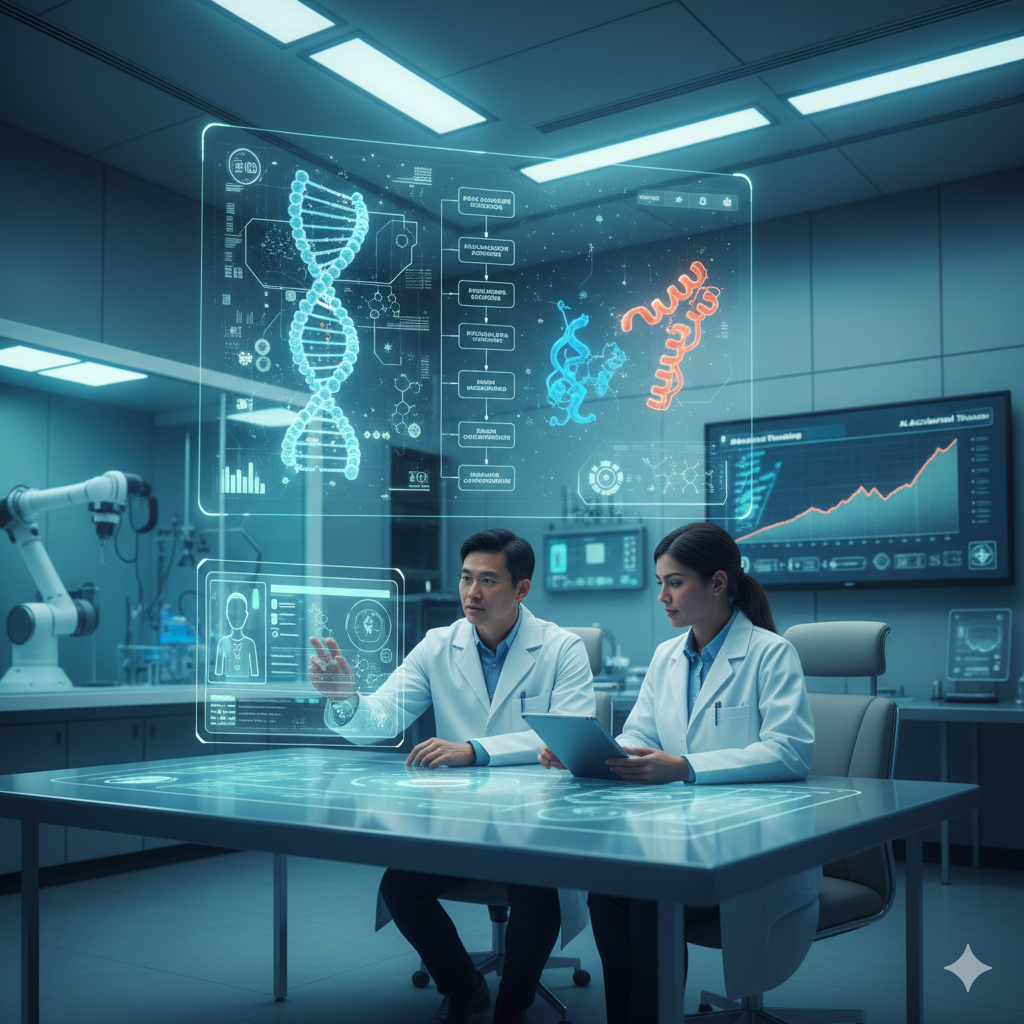
Artificial Intelligence (AI) is transforming various sectors of the world at an unprecedented speed, and its impact on human health is particularly profound. From disease prevention to diagnosis, treatment, rehabilitation, and wellness management, AI is gradually integrating into every aspect of healthcare, bringing more accurate, efficient, and personalized medical services to humanity. This article will delve into the specific applications of AI in human health and the far-reaching significance it brings.
I. Disease Prevention and Early Warning
AI plays a crucial role in disease prevention. Through big data analytics and machine learning, AI can identify potential disease risk factors from vast amounts of health data. For example:
* Personalized Health Risk Assessment: AI can analyze an individual's genomic data, lifestyle habits, environmental exposures, and medical history to predict their risk of developing specific diseases. For instance, by analyzing genetic markers, AI can identify people susceptible to breast cancer or heart disease, thereby recommending preventive measures.
* Epidemic Surveillance and Prediction: AI can monitor global epidemic data, social media trends, and news reports in real-time to predict disease outbreaks and transmission paths. For example, by analyzing the geographical distribution of flu-related search terms, AI can provide an early warning of an influenza outbreak in a certain area, buying valuable preparation time for public health departments.
* Lifestyle Interventions: AI-driven health applications and wearable devices can monitor users' activity levels, sleep patterns, heart rate, and other health metrics. Based on this data, they offer personalized health advice, helping users adopt healthy lifestyles and reduce the risk of chronic diseases. For example, a smart band can remind a user to get up and move after prolonged sitting or adjust their sleep schedule based on sleep quality.
II. Precise Diagnosis and Disease Identification
In disease diagnosis, AI's capabilities often surpass human visual inspection and traditional methods, significantly improving the accuracy and efficiency of diagnoses.
* Medical Image Analysis: AI excels at interpreting medical images such as X-rays, CT scans, MRIs, and ultrasounds. It can quickly identify subtle lesions in the images, such as early tumors, fractures, or vascular abnormalities, often detecting issues at a stage that is difficult for a human eye to notice. For example, AI-assisted diagnostic systems can help doctors increase detection rates and reduce misdiagnoses in breast cancer screening.
* Pathological Analysis: AI can perform high-precision analysis of pathological slides to identify cancer cells and other abnormal tissues. It can process large volumes of samples faster and more consistently than human pathologists, thereby accelerating the diagnostic process, which is especially significant in cancer diagnosis.
* Assisted Diagnostic Systems: AI can integrate various data points, including patient history, symptoms, and laboratory results, to generate preliminary diagnostic suggestions and offer differential diagnosis options. This not only assists less experienced doctors but also provides a second opinion for seasoned physicians, lowering the risk of missed or incorrect diagnoses.
* Genome Sequencing and Disease Diagnosis: AI can analyze complex genomic data to identify gene mutations associated with specific diseases, playing a unique role, especially in the diagnosis of rare and genetic disorders.
III. Personalized Treatment and Drug Development
AI shows immense potential in formulating treatment plans and discovering new drugs, offering patients more precise, effective therapies and accelerating the time-to-market for new medications.
* Personalized Treatment Plans: Based on a patient's genomic characteristics, disease type, physical condition, and predicted response to different drugs, AI can create the most suitable, personalized treatment plan. For instance, in oncology, AI can help doctors select the most effective chemotherapy or targeted therapy drugs.
* Drug Discovery and Development: AI has drastically accelerated the process of new drug research and development. It can rapidly screen millions of compounds, predicting their pharmacological activity and toxicity, thus significantly reducing the time and cost of drug discovery. AI can also simulate the binding of a drug to its target, optimizing the drug's structure and improving the success rate of R&D.
* Clinical Trial Optimization: AI can help design more efficient clinical trials by predicting which patients will respond best to a particular drug, allowing for more precise subject recruitment and a higher chance of trial success.
* Surgical Assistance: AI-powered robotic surgery systems can provide high-precision operations, reducing surgical risks and patient recovery time. For example, in min



You must be logged in to post a comment.